This post may contain affiliate links. I only recommend products or services that I personally use or trust, promise!

Ever wonder how seolleongtang restaurants make such delicious radish kimchi? The BEST kkakdugi I’ve had has always been at a Korean restaurant that serves some type of beef soup.
Kkakdugi is a type of kimchi made from Korean radishes. This is my dad’s favorite kimchi. He loves it so much that he will keep eating it even after he finishes his rice. It’s crunchy, spicy, and slightly sweet.
I’ve had a lot of super bomb kkakdugi, but the best I have ever tried is from a restaurant near Las Vegas Blvd called E-Jo. I told my parents about this spot because they go to Vegas every year for a bowling tournament, and they LOVED the kkakdugi there. Now my parents eat there at least twice on every trip to Vegas.
I don’t know E-Jo’s recipe, but my goal was to make mine as good as theirs. After picking the brains of my family who used to own a seollongtang restaurant, I uncovered some secrets that I never knew about.

How to make the BEST kkakdugi
There are 3 key things that I did differently to make the most delicious radish kimchi:
- Rinse the salt– I’m using Korean sea salt which is common for kimchi making. Before adding it to the radish, give it a very quick rinse under cold water. This washes away the bitter minerally taste.
- Use Sweet & Low instead of regular sugar– I do this because regular sugar will prevent the radish from staying nice and crunchy. Sweet & Low is much sweeter than regular sugar so you only need to use a little. You will notice how crunchy the radish is compared to when you use sugar.
- Use ox bone broth in the rice porridge (sauce binder)- instead of using just water, I use a mix of water + ox bone broth to make the sauce binder. This will add a ton of umami. That’s why I always freeze some broth, but you don’t even have to make it to do this – you can buy it from a Korean market in packages like the one pictured below.
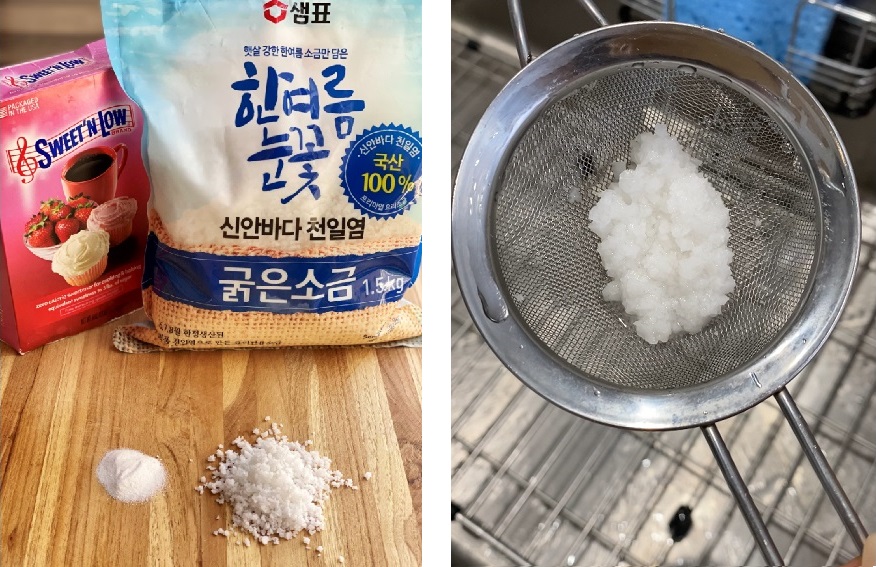
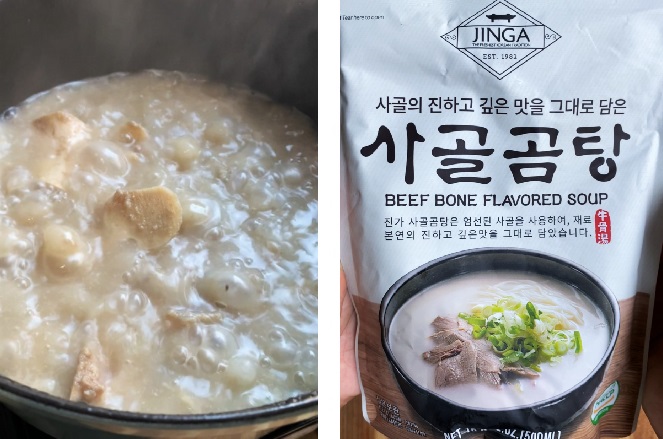
Fermentation process
Like other kimchi, you have to let the kkakdugi sit at room temperature for at least 1 day to begin the fermentation process. You will start to see bubbles coming to the surface, and you can even hear it fermenting.
I like to ferment mine at room temperature for 48 hours. I like it sour. If you don’t like it that sour, just decrease the time you leave it on the counter. Also keep in mind that your location’s climate will play a part and times can vary. You can tell when it is to your liking by smelling it.
Check on the kimchi periodically while it is fermenting. Make sure there are bubbles. Push the radish down so that they are submerged in the juices as much as possible. I get messages from my followers pretty often asking why fuzzy mold has formed at the top of of their radish kimchi, and it is usually because it has been exposed to air for too long without enough juices to coat it. You should always make sure the jar is clean before storing the kimchi in it as well.
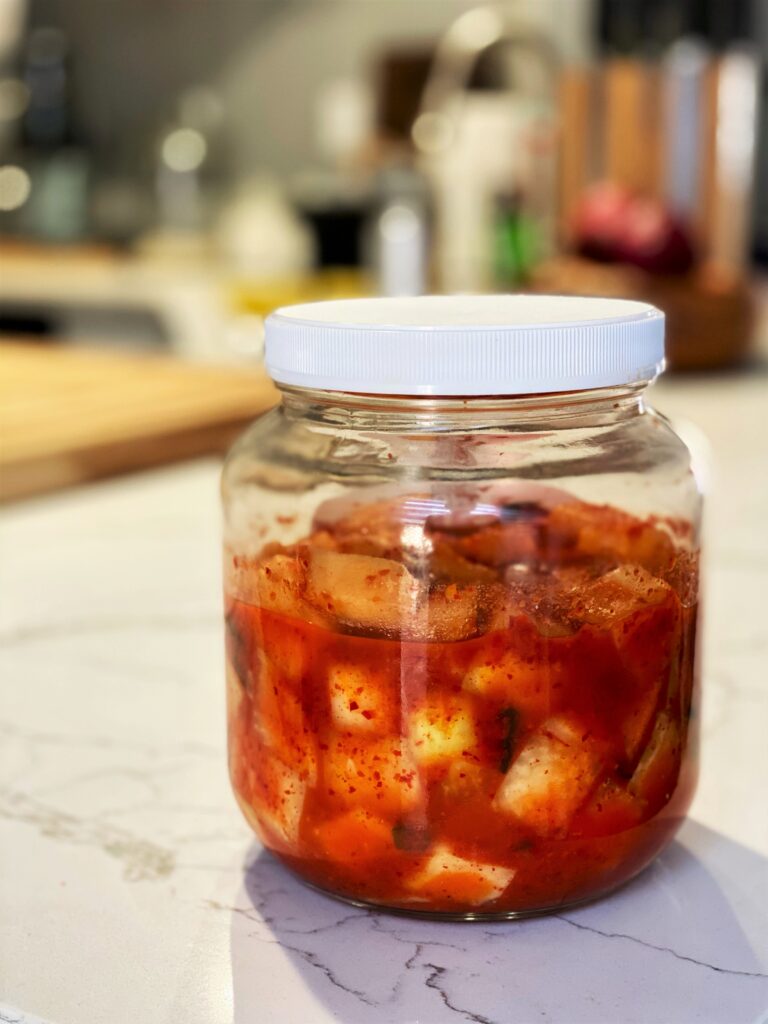
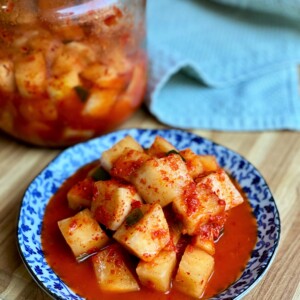
Kkakdugi – 깍두기 (Radish Kimchi)
Ingredients
- 2 1/2 lbs Korean radish, washed and cubed
- 4 tsp Korean sea salt
- 1/2 tsp Sweet & Low, use less if you don't like it sweet at all
Seasoning Sauce
- 1/4 cup gochugaru, korean red pepper flakes
- 2 garlic cloves, minced
- 1/2 tsp fresh ginger, minced
- 1 tsp salted shrimp
- 1/2 tsp fish sauce
- 1/2 tsp plum extract
- 1 tbsp chopped red chili, optional, extra spicy
Sauce Binder
- 1/4 cup ox bone broth
- 1/3 cup water
- 2 tsp glutinous rice flour
Other Ingredients
- 2 green onions, chopped
Instructions
- Wash the radish thoroughly to remove any dirt. You can peel all of the skin if you want to, but I only peel off dark blemish areas and keep the skin on the rest.
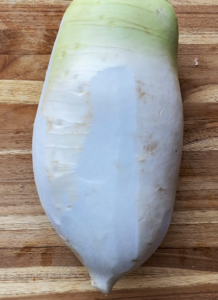
- Cut the radish into 1 inch discs, then into square inch cubes. Set aside in a large mixing bowl.
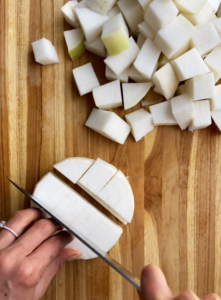
- QUICKLY rinse the Korean sea salt under cold water. This is to remove the bitter mineral taste.
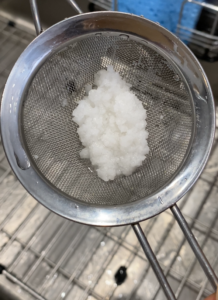
- Add the salt to the radishes, along with the Sweet & Low. Toss to coat evenly and set it aside for 20 minutes to draw out the water.
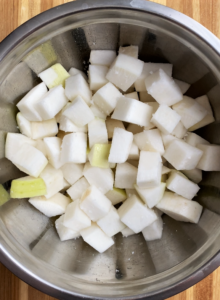
- Meanwhile, make the rice porridge (our sauce binder). First mix the water, bone broth, and glutinous rice flour together until there are no more clumps. Then turn on the heat to medium-low and keep stirring until it thickens.
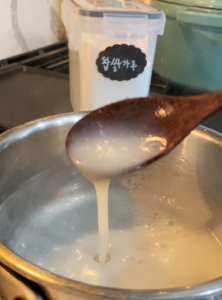
- Let it cool completely, then add the seasoning sauce ingredients and mix well.
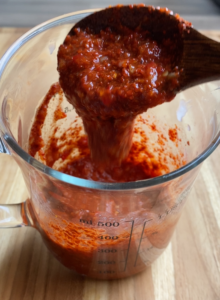
- Drain the water from the radish after the 20 minutes are up, then taste a piece to make sure it is not too salty. If it seems too salty to you, give them a very quick rinse under cold water.
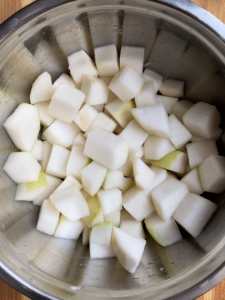
- Add the seasoning sauce and chopped green onions to the radishes and mix until coated evenly.
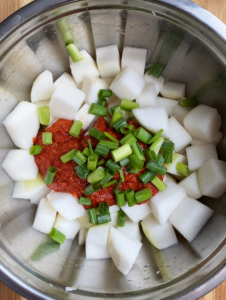
- Store in a clean glass jar, pushing down on the kkakdugi to reduce the amount of air pockets.
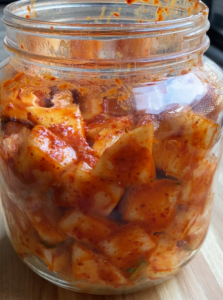
- Keep the jar on your kitchen counter (room temperature) for 36-48 hours depending on how sour you like your kimchi. I keep mine out for 48 hours. Smell the kimchi to determine when it has fermented enough for you.
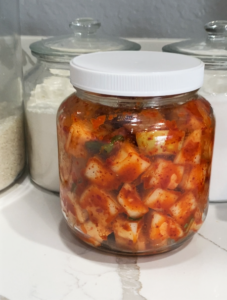
- After 1 day, check on your kimchi to make sure it is fermenting. Look for bubbles on the sides, or on top. Push down to make sure the radish is submerged in the juices as much as possible.
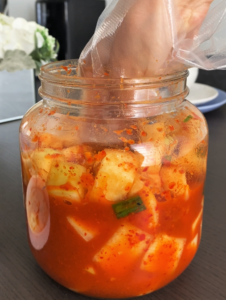
- After fermenting at room temperature, store in the fridge for up to 2 months.

Nutrition information is automatically calculated, so should only be used as an approximation.
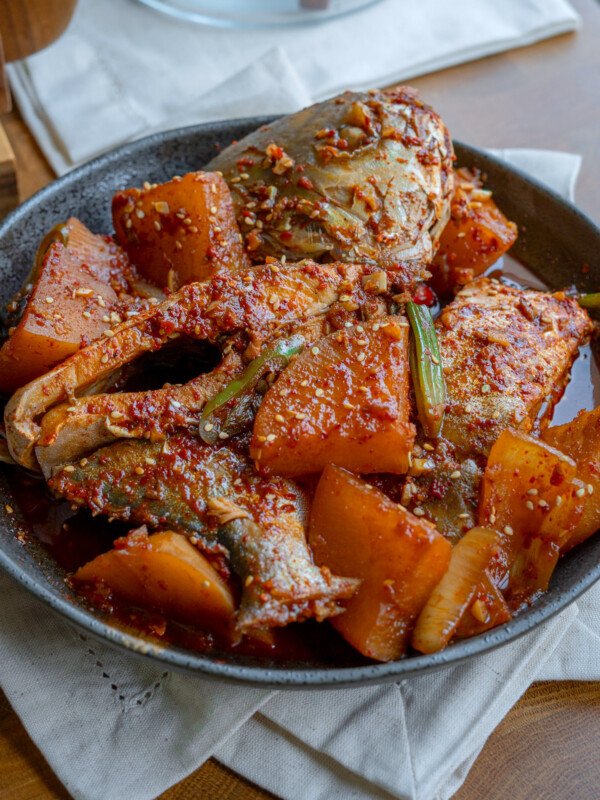
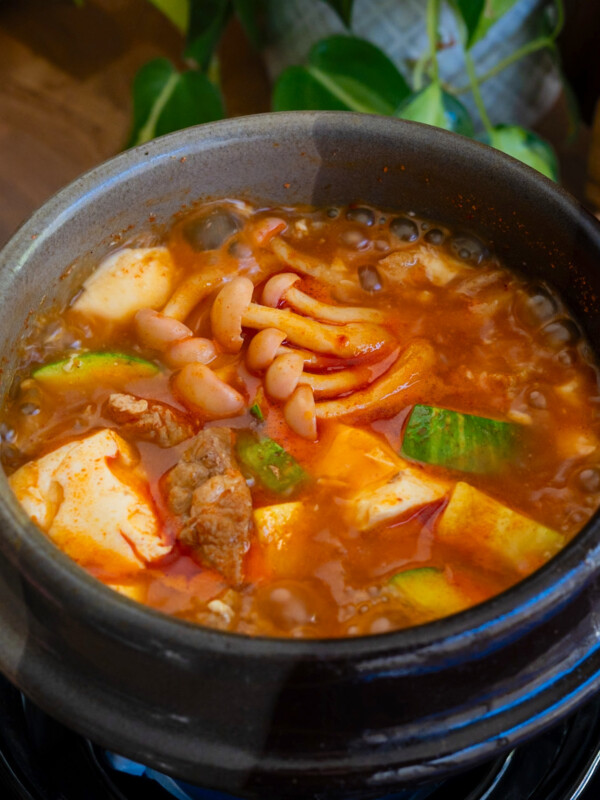
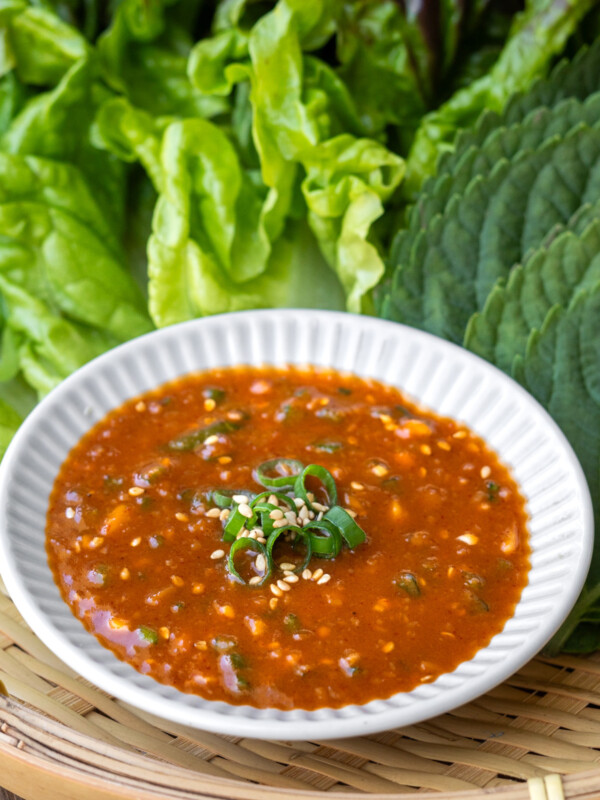
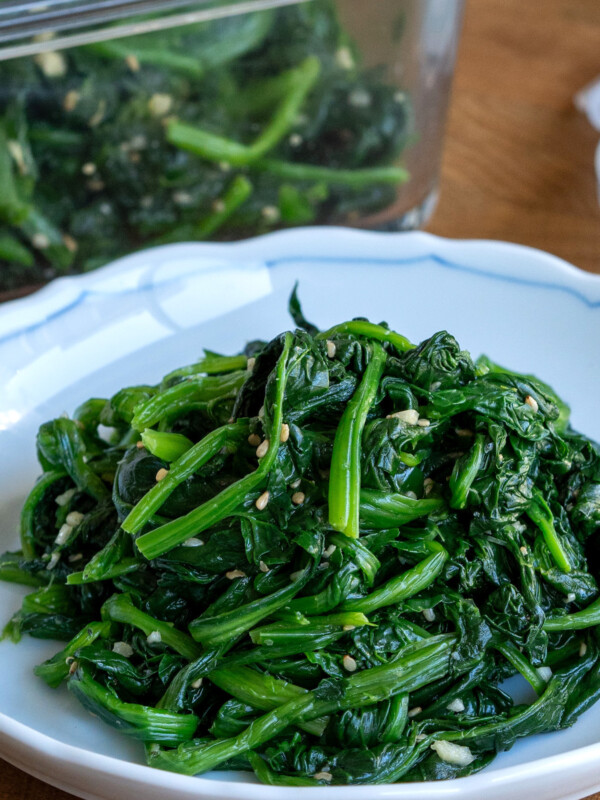







One of my favorite side dishes- radish kimchi. I never tried making it, the thought of it kind of scared me not sure why.. but I followed your recipe and it was so easy and turned out so good! Thanks for sharing it!
I halve tried making so many 깍두기 recipes from Korean YouTube moms to young influencers to old school cookbooks and I have yet to find one that’s easy to follow and have the best results. I love how you break down each step and explain why and how it’s done. And each time my 깍두기 tastes better than what I buy from the store.
I made this recipe a while back when stella first shared her radish kimchi recipe on tiktok! I still use this recipe to this day and I highly recommend it. This recipe is nearly fool proof and it tastes just like the ones you get from seollungtang restaurants.